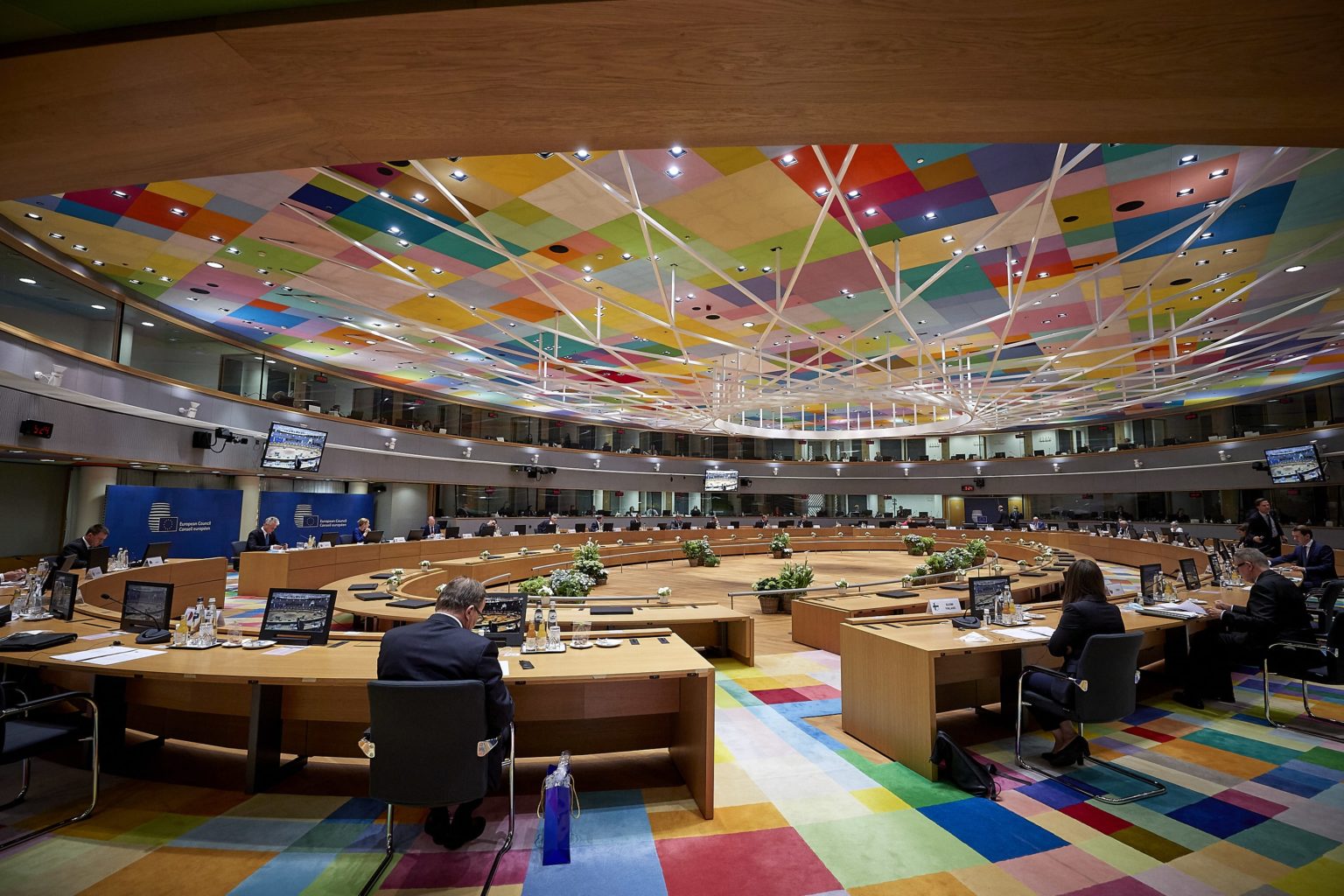The European Commission’s response to Russia’s invasion of Ukraine is to promote green technologies in a way that the strongest EU economies can profit from, but the weaker ones cannot. However, the proposed solutions do not answer the question of how to build proper resilience, since the EU does not have and does not produce the components or raw materials on which it wants to base its decarbonization strategy – writes Krzysztof Kowalewski, a contributor to BiznesAlert.pl.
A year has passed since Russia invaded Ukraine. This is an armed aggression on a scale unprecedented in our region since World War II. Although military operations in eastern Ukraine have continued uninterrupted since the overthrow of the pro-Russian Ukrainian President Viktor Yanukovych in 2014, a full scale war started on the 24th February 2022.
However, even before that, the West had received a warning about a threat to the European order, because the situation in the region had been first destabilized in 2008 when Georgia was invaded. Yet, this event had no impact on the completion and acceptance in 2012 of the gas pipeline connecting Germany directly with Russia. Despite the fact that this project was detrimental to Poland, Ukraine and the Baltic states for many reasons, in 2011 the parties decided to add another two lines to the underwater gas pipeline. This time France’s Engie joined the European partners (Germany’s Wintershall and E. ON and Holland’s Gasuna) and Russian Gazprom. Despite the opposition of many states, including the United States, the first phase of the armed conflict in Ukraine, the annexation of Crimea and many other factors potentially negatively affecting the project, the determination of Germany in particular, was so great that without any major obstacles it managed to carry the project to its certification phase in early 2022. What is even more bothersome, this happened despite numerous objections and interventions member states made on the EU forum warning about a significant threat.
Germany’s desire to make money by trading cheaper gas from Russia, despite the increasingly tense situation in the East, manifested itself in more areas than just fossil fuel transmission. One needs to mention Siemens illegally delivering gas turbines to Crimea, and the scandal related to selling arms to Russia where 80 percent of the EUR 350 million in profit went to France and Germany. It is also impossible omit the repeated attempts to delay sanctions and undermine solidarity within the community, for example by opposing the setting of a maximum price for Russian gas, or delaying the Leopard tanks.
If it can be said that all of the above actions were aimed at maintaining complex business relations and pursued due to the deep economic ties between Germany and Russia, the current actions as part of the EU seem to be the opposite. However, they are even more effective in terms of generating new revenues during the war. First of all, this pertains to actions related to subsidizing one’s own economy as part of the relaxed rules for state aid (Temporary Crisis Network – TCF). Of the EUR 672 billion that the TCF has mobilized across the EU, Germany has pumped 53 percent, or nearly 360 billion into its economy. France came in second place with more than EUR 160 billion in public aid. Of course, the scale of Germany’s actions has been criticized by experts and member states who point to disparities in member states ’ financial capabilities and a significant distortion of competitiveness in the EU single market. Nevertheless, the biggest beneficiary of the new mechanisms, rather than acting like a member of a wider community, focuses solely on its own profit and expects further loosening of the rules for transferring budget funds to its enterprises. The effect, and perhaps the goal, seems obvious and it is to build a competitive advantage of its economy in new fields, but also to consolidate dominance in specific industries.
This thesis is confirmed by Germany’s negative response to changing the rules by shifting the focus from national to EU actions, and creating a Sovereignty Fund (as a response to America’s Inflation Reduction Act, IRA). Christian Linder, Germany’s Finance Minister, has openly criticized such an EU wide approach. The current situation is good for Germany because, as the country with the largest financial resources, it stands out against other EU states mired in the current crisis. However, the less well-off EU members can applaud the fact that the number of states that criticize Germany’s policy, which goes against EU solidarity, is growing. While Italy did not sign the agreement that warns against the excessive loosening of state aid rules in December, its position on this topic is evolving. Recently, Giorgia Meloni expressed deep dissatisfaction with the current state of affairs, and opted for strengthening the solidarity principle and creating a joint fund. The disappointment of the de facto member of the Germany-France-Italy trio, was also caused by the fact that Rome was not invited to the joint format together with the US in the context of the IRA.
The latest initiative of EC President Ursula von der Leyen, announced in Davos, in which Germany also had to play a key role, is the Green Deal Industrial Plan (GDIP). In short, it is a plan to extend the TCF and to direct public aid flows towards „green technologies” with further loosening of spending rules. GDIP funds, as usual in the EU, are to be made available to projects that accelerate the deployment of renewable energy and hydrogen installations, but not to nuclear energy. They will also bankroll the decarbonization of industrial processes and extended support for the production of „net-zero” technologies and new, large, strategic production projects. Although the laconic rationale contained in the new EC proposal seems small and insufficient to tackle the current realities and challenges (especially in the context of the energy crisis) facing member states, it can easily be concluded that it is tailored to countries with highly developed competences in the field of RES and „green technologies” and very large financial resources. Co-financing the above-mentioned actions, especially in the field of industrial decarbonisation, will allow richer countries to achieve competitive advantages, and it may be impossible for others to catch up once the normal single market rules return. Implementing the plan in its proposed form (which many countries disagree with) would result in the richest countries building an exceptionally strong competitive position, not against the US in response to the IRA, but against the less wealthy members of the EU.
Finally, it should be noted that the EC proposal published as GDIP- Net-Zero Industry Act does not have an impact assessment or a credible justification. Traditionally, it takes into account the risks associated with supply chains, as in the case of REPowerEU and the Chinese monopoly in photovoltaics. The document is based on optimistic assumptions about the creation and development of new technologies, it bases the success of the transformation on a non-existent technological resource, and does not answer the question of how to build adequate resilience, since the EU does not have and does not produce the components or raw materials on which it wants to base its decarbonization strategy. In the document, the implementation of the proposed plans related to renewable energy and decarbonization is presented as the key to achieving global competitiveness. This is despite the fact that the current leaders of change such as Germany and Denmark have 2-3 times higher energy prices for industries than the United States or China. As always, the report points to „expensive fossil fuels” without distinguishing between domestic and imported resources.
The above clearly indicates that whether the EU is responding to climate change, pandemics, the war in Ukraine, or to mitigating the effects of the American IRA, the solution is always the same – greater investments in renewables, hydrogen, energy storage, electromobility, heat pumps. Who will be the biggest beneficiary in the EU? I don’t know, but I have a pretty good guess.









